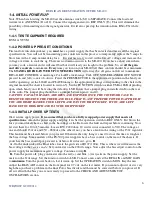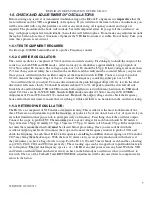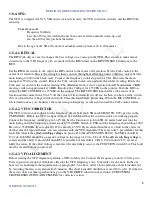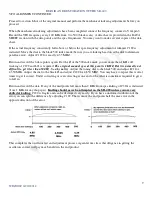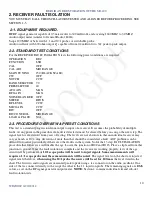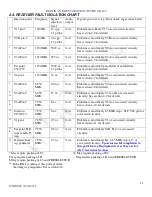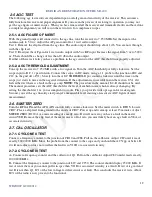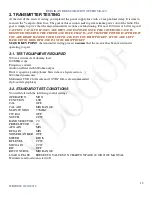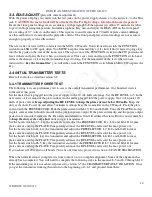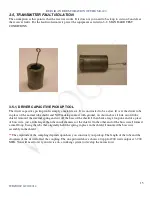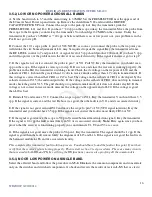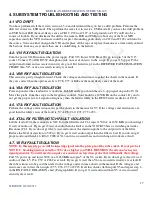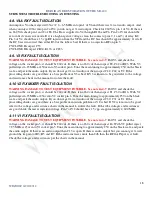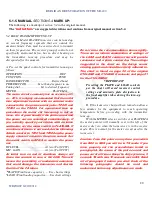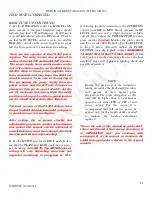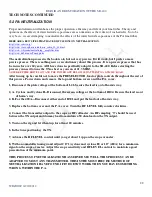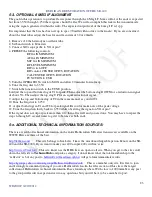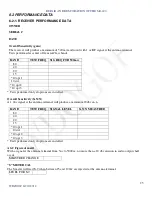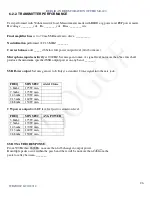
REPAIR AND RESTORATION OF THE SR-400
20
WDØGOF 6/22/20014
5-1-5. MANUAL
SECTION 5-4
MARK UP:
The following is a markup of
section 5-4
in the original manual.
The “
red letters
” are suggested deviations and cautions from original manual section 5-4.
5-4 BASIC TRANSMITTER TUNE-UP
The Model SR-400 Transceiver can be tuned up
on several frequency segments that are outside the
amateur bands. Care must be exercised not to transmit
on these frequencies. The receiver group of controls, not
specifically mentioned below, has no direct bearing on
the transmitter tune-up procedure and may be
disregarded for the moment.
A. Pre-set the panel controls for transmitter tune-up as
follows:
OPERATION…………………………………….REC
FUNCTION…………………………………….TUNE
BAND SELECTOR……………………..Desired band
PRESELECTOR…………..Set at band segment in use
Tuning dial………………...…Set to desired frequency
METER…..………….………….………...PLATE MA
The meter circuit commonly has an accuracy of +
or – 20%. It is highly recommended that the initial
bias adjustment be done with an external meter
connected to the plate current jacks, TP201 and
TP202 on the PS-500. For operational tune up
procedures the meter ckt inaccuracy is not an
issue. It is of great benefit if the plate current and
the power out are monitored simultaneously. If
you normally operate your station with an inline
wattmeter, set the meter switch to PLATE-MA. If
an inline wattmeter is not used, do the following.
Attach a meter to TP201 and TP202 on the power
supply chassis to monitor the plate current. Set
the meter switch to RFO/S to monitor the power
out.
RF LEVEL……………………...…At zero (Full CCW)
MIC. GAIN……………….……… At zero (Full CCW)
At initial turn on and at shutdown always set
these two controls to zero or full CCW. This will
lessen the possibility of inadvertent emissions
that could damage the transceiver and shorten
the life of the PA tubes.
*
PLATE (Final tune capacitor)……Use chart settings
*LOAD (Final loading capacitor…..Use chart settings
Do not take the recommendation below lightly.
There are an infinite combination of settings of
the LOAD and PLATE controls that will provide
resonance and a plate current dip. The settings
suggested in the chart are the design center
starting points and should be strictly adhered to.
The chart is found on page 20 of the original
CYCLONE and CYCLONE II manuals and page 21
for the CYCLONE III
.
*IMPORTANT
Presetting the PLATE and LOAD controls
per the chart will avoid incorrect control
settings and minimize plate dissipation in
the final amplifier tubes during the turn-up
procedure.
B. If the transceiver has just been turned on allow a
few minutes for the equipment to reach operating
temperature before proceeding with the transmitter
tune-up.
With the METER selector switch set at PLATE MA
the meter pointer will normally rest to the left of the
meter scale zero when the transceiver is in the receive
mode. This is normal for the meter circuit used in the
transceiver.
Caution: From this point on any time you switch
from REC to MOX you will be in TX mode if you
have properly set the preconditions listed in
paragraph A. Be aware of the plate current and
power out at all times. Keep the duty cycle low, 5
seconds TX with min 10 seconds rest in RX. Read
all of paragraph C before you start. Each of the
following paragraphs should be read and
understood before any adjustments are made.

